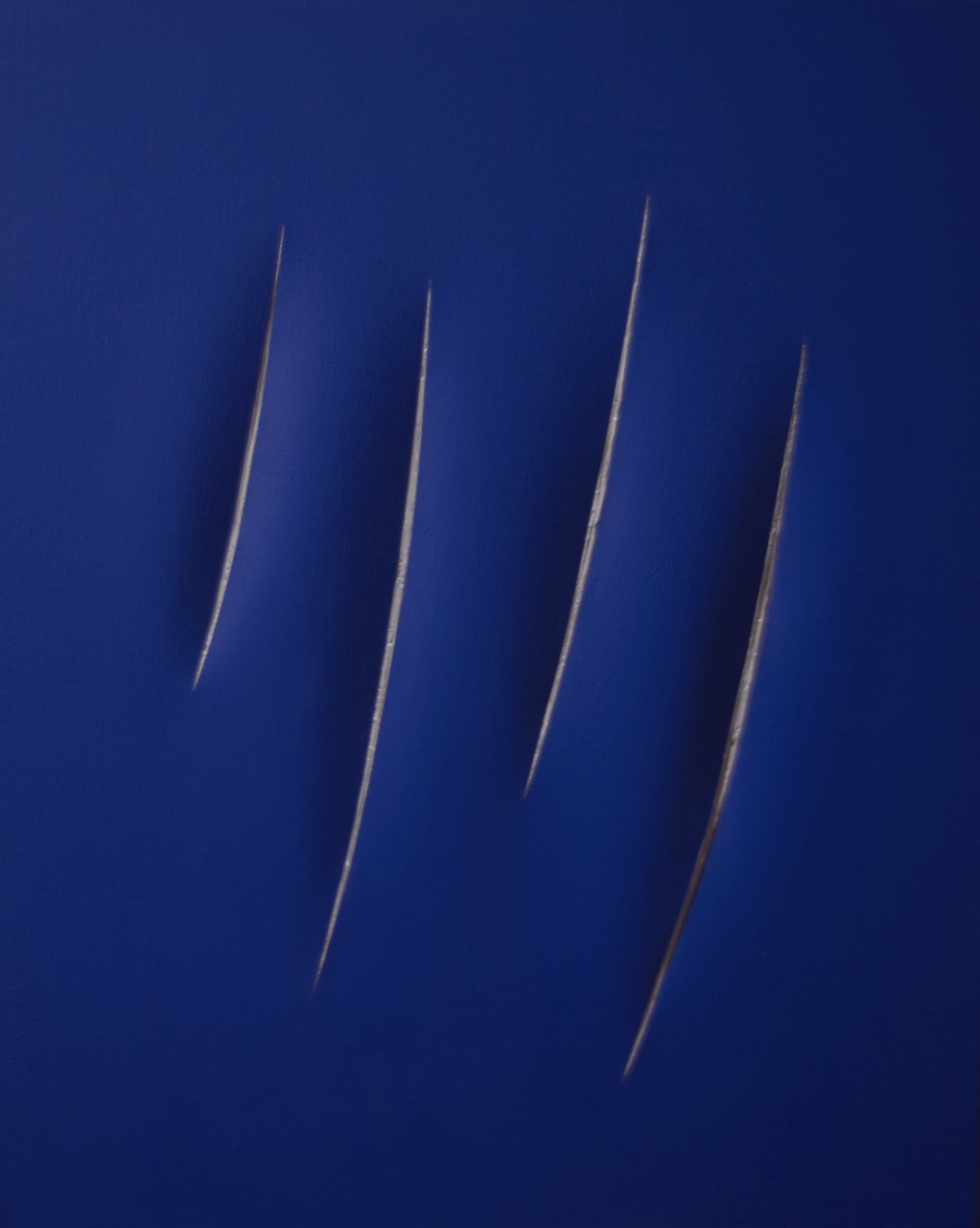
Betrayal(s)シリーズ
series 'Betrayal(s)'
2017年-
ルーチョ・フォンタナのアプロプリエーション/切り裂かれたキャンバスに金継ぎ
油彩, 金粉, 漆
本作は、カンヴァスをナイフで切り裂いたことで知られる20 世紀のイタリアの美術家ルーチョ・フォンタナによる「Concetto spaziale(空間概念)」シリーズのオマージュ作品で、 サンプリングした”カット”を「金継ぎ」で修復している。「金継ぎ」は、欠けた器などを漆で接合し、継ぎ目に金をあしらう日本の伝統的な修繕技法である。傷跡は破壊という出来事の痕跡であり、”否定”のニュアンスを含むが、金継ぎにおいては、修復痕を「景色」に見立てることで“肯定化” される。それは欠けや不足の中に美を見出す日本固有の美意識に根ざしている。フォンタナの切り裂きは、しばしば副題として添えられる「期待(Attesa / Attese)」という肯定的なキーワードが示唆しているように、「破壊による創造」を意図している。フォンタナは絵画の平面空間を切り裂くことで芸術における新しい次元を切り開こうとした。 本作では、「期待」のカットを接合することで「裏切り(Betrayal)」を働いているが、金の修復痕に反映された肯定的な精神性は、結局のところ「期待」を表している。
「MONSTER Exhibition 2017」2017年, hpgrp gallery NewYork 解説文より抜粋

